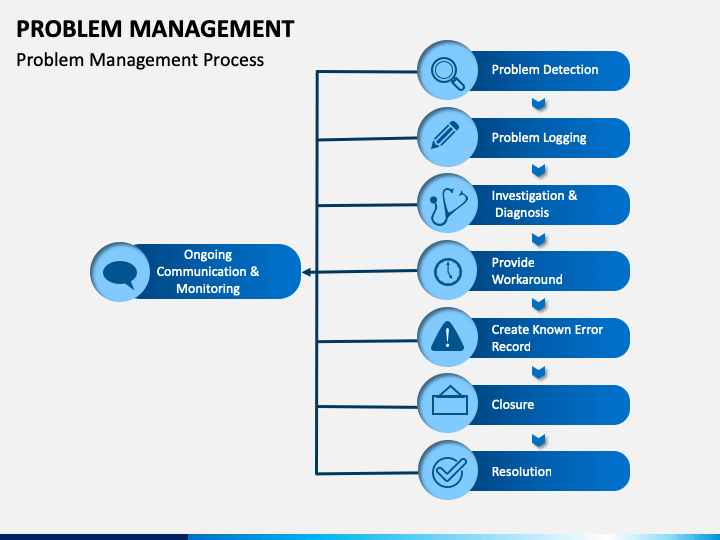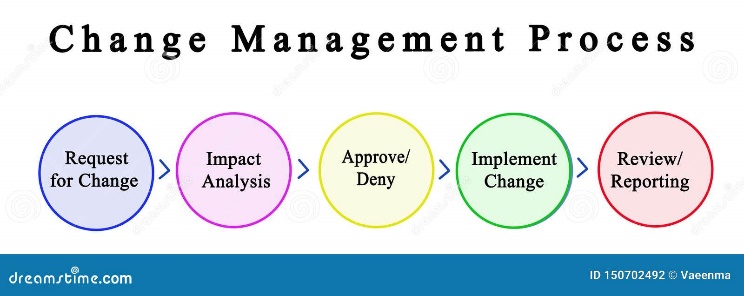- Organization
| - Statement of the Problem
- Objectives
- Technical approach
- Project management flow
|
Engineering Designing Process
- A progress of steps that architects follow to come up with an answer for an issue.
Steps in Design Process | - Define the problem
- Identify constraints on your solution and criteria for success (Background research)
- Brainstorm multiple solutions for the problem
- Select the most promising solution
- Prototype your solution
- Test and evaluate your prototype
- Iterate to improve your prototype (until it meets the requirements)
- Communicate your solution
|
Guidelines in Designing an ICT Project
- Quality
| - Produce value for money
- Product is useful and provides solution
- Conveyed in proficient way
|
- Timeliness
| - Project must be finished on time
- Flexible in uncommon scenarios
|
- Teamwork
| |
- Consistency
| - Project must be overseen in a predictable manner
|
- Business value
| - Project should be connected to business goals
|
- Communication
| |
- Flexibility
| |
- Required format
| - Consist of layout and typography
|
- Organization
| - Enumerates the sections essential for proposal:
- Title page
- Summary
- Table of Contents
|
Copywriting for ICT Project
- Copywriting is a key component of all product promotions, campaigns, and marketing.
- According to Edmondson (2020), copywriting is the skill or field of work of writing sales promotion and other marketing materials.
Kind of Copywriter
- Marketing materials
| |
- Advertising
| - Creative concepts for adverts
- Appear in prints and broadcasts
|
- Websites
| - Writing content for online publication
|
- Search Engine Optimization (SEO)
| - Writing content for websites in such a way that it appeals to search engines
|
- Business to Business (B2B)
| - Writing communications from one business to another
|
- Business to Consumer (B2C)
| - Helping companies to sell to the public
|
Skills Needed in Copywriting
- Active Listener
| - Giving full attention to what other people are saying
- Taking time to understand the points being made
|
- Critical Thinking
| - Using logic and reasoning to
|
- Critical Thinking
| - identify strengths and weaknesses of solutions, conclusions, or approaches
|
- Time Management
| - Managing own/others’ time
|
- Effective Writing
| - Communicating effectively in writing as appropriate for the needs of the audience
|
- Reading Comprehension
| - Understanding written sentences and paragraphs in work related documents
|
- Speaking
| - Talking to others to change their minds
|
- Active Learning
| - Adjusting actions in relation to others
|
- Persuasion
| - Persuading others to change their minds
|
- Coordination
| - Adjusting actions in relation to others
|
- Equipment Selection
| - Determining the kind of tools and equipment needed to do a job
|
- Monitoring
| - Assessing performance to make improvements
|
- Complex Problem Solving
| - Identifying complex problems and reviewing related information to develop and evaluate options and implement solutions
|
- Judgement and Decision
| - Putting more thoughts and considering the cost and benefits of an action
|
- Instructing
| - Teaching others how to do something
|
- Learning Strategies
| - Using training methods and procedures appropriate for the situation when learning or teaching new things
|
Publishing an ICT Project
Uploading and Website Management
2 Ways to Upload a Website | - Purchasing a domain name
- The use of 3rd party websites that enables us to create a sub website
|
Things to be Considered Before Uploading
- How people view a webpage (audience profiling)
- Design techniques that should be considered
- The option of regularly changing a website
- File formats that are acceptable when uploading a website
- GIF (Graphics Interchange Format)
- JPG (Joint Photographic Experts Group)
- PNG-8 (Portable Network Graphics-8 bit)
- PNG-24 (Portable Network Graphics-24 bit)
Design Techniques that Should be Considered
- According to an online article by Conversion XL Founder Peep Laja, one design technique that works effectively is that the first paragraph of an article in a webpage should be slightly larger than the rest of the content.
- A user focuses on the logo for about 6.48 seconds before moving on.
- Traction
| - Is achieved when your website is being used by many users
|
- Traffic Monitoring
| - Traffic or website traffic is determined by the number of users of a website including the number of pages they visit
- When monitoring web traffic, the following information are often gathered:
- The count of visitors
- The average number of pages viewed by visitor
- The most visited pages
- Most requested entry pages
- Most requested exit pages
|
- The navigation menu is the second most viewed part of the webpage, subjects spent an average of 6.44 seconds viewing the menu.
- The search box was viewed for 6 seconds.
- Social networking links were viewed for 5.95 seconds before moving on.
- The site’s main image was viewed for 5.94 seconds.
- The site’s written content was viewed for 5.9 seconds.
- The site’s bottom part was viewed for 5.25 seconds.
Promotion, Traction and Traffic Monitoring
- Website Promotion
| - The process of increasing exposure of a website to bring in visitors
- Search Engine Optimization is a methodology of techniques, tactics, and strategies used to increase the amount of visitors to a website by obtaining a high ranking placement in the search engine
- Search Engine Submission is the process of submitting a website directly to a search engine
- Web Content Development is the process of gathering, researching, waiting, organizing, and editing information
|
Sustaining ICT Project for Social Change
Terminologies |
Problem | - Is the unknown underlying cause of one or more incident
|
Problem Management | - Aims to resolve the root causes of incidents
- It aims to minimize the adverse impact of incident cause by errors
- It prevents further incidents
|
Workaround | - Overcoming a problem or limitation
|
Known Error | - Condition identified by successful diagnosis of the
|
Known Error | - root case of a problem and the subsequent development of a workaround
|
Change | - Event that results in a new status of one or more configuration items which are approved by the management
- Enhances business process changes
|
Change Management | - Ensures that standardized methods and procedures are used for efficient handling of all changes
- 3 Aims:
- Minimal disruption of services
- Reduction in back-out activities
- Economic use of resources in the change
|
Request Fulfillment | - Focuses on fulfilling service requests, which are minor changes (standard change) or request for information
|
Standard Change | - Means pre-approves, repeatable, pre-defined, and low risk changes
|
IT Infrastructure | - The basic hardware, software, networks, and facilities
- Examples:
- Network equipment
- Telecommunication services
|
Infrastructure Management | - The process of managing equipment, software, and services
- Another branch of Information Technology Infrastructure Library (ITIL)
- Goal is to use prove, repeatable processes
|
Technical Support | - Persons who monitor and maintain computer systems and networks within an organization
- Provides assistance to those who experience technical, hardware, or software issues
|
Service Support | - Encompasses the support processes necessary to ensure service quality
|
- Problem Management Process

- Change Management Process

Reflecting on the ICT Learning Processes
- ICT in learning
- Transformed the way of communicating, networking, seek help, access information and learn.
- The utilization of ICT in instruction focused in learning settings.
- Successful utilization of ICT in Education tends to showcase learning process and learning aspirations.
ICT in Education Trends
- According to Bui (2020), the following are some Educational Technology trends in 2020-2021:
- Online & Blended Instruction
- STEM Based Learning
- Gamification (a method where games are used for learning and engagement to motivate and set competition for different users of the app/software.)
- Video Assisted Learning (the use of videos to enrich lessons and make content comprehensible.)
ICT and Society
- Digital Divide is the term that refers to the gap between demographics and regions that have access to modern ICT and those that don’t.
- Information and Communication Technologies for Development (ICT4D) alludes to the use of ICTs in the fields of financial improvement, worldwide advancements, and human rights.
- ICT4D is an initiative aimed at bridging digital divide and aiding economic development by ensuring equitable access to up-to-date communications technology.
D in ICT4D (Development)
- ICT4D for Poverty Alleviation
- ICT4D for Agriculture
- ICT4D for Healthcare
- ICT4D for Education
Impacts of ICT to the Society
Positive |
- Faster Interactions
| - We can send emails to our friends, business partners, or to anyone efficiently
|
- Low Cost Communication
| - The internet allows people to access large amount of data at very low cost
|
- Paperless Environment
| - ICT helped documents to be stored and retrieved through the digital medium instead of paper
|
- Effective sharing of information
| - ICT has enables knowledge sharing which contributes to the development of a knowledge-based society
|
Negative |
- Social Problems
| - A person prefers to be isolated and engage in different negative activities like online gambling, identity theft, and hacking
|
- Health Problems
| - Physically, mentally, and emotionally
- Examples are bad posture and the Body Dysmorphia Disorder wherein it is a condition where an individual becomes obsessive about a perceived flaw in their appearance.
|